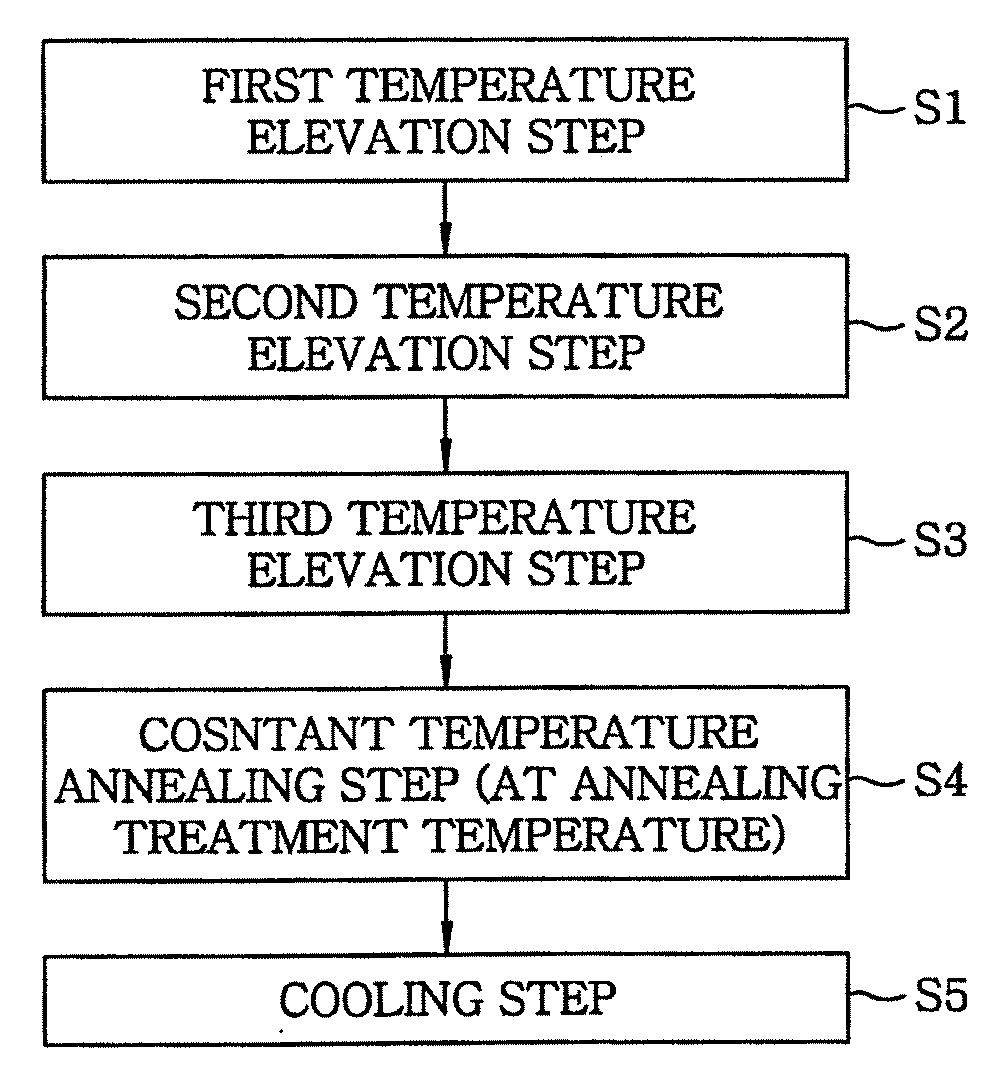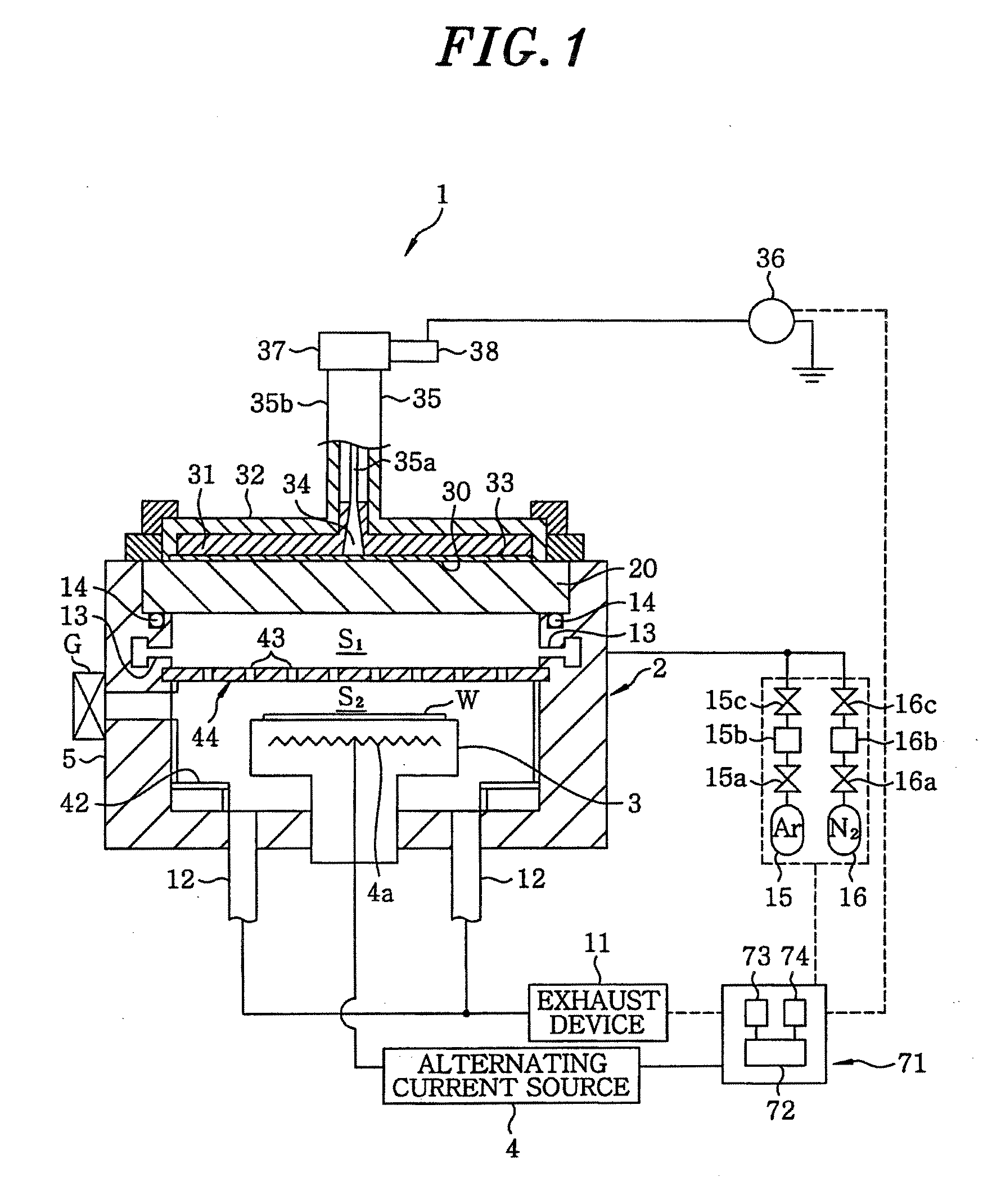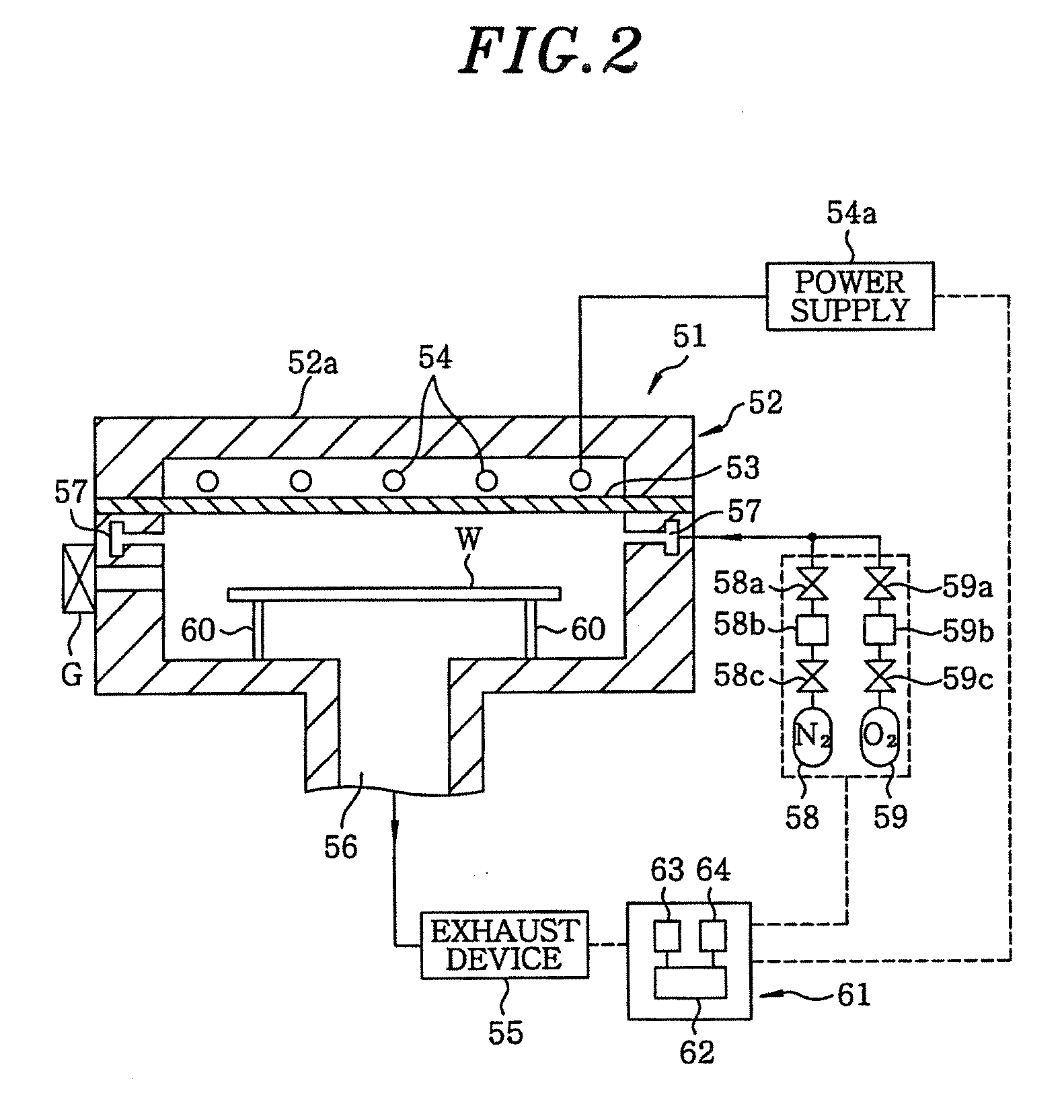Insulating Film Forming Method and Substrate Processing Method
- Summary
- Abstract
- Description
- Claims
- Application Information
AI Technical Summary
Benefits of technology
Problems solved by technology
Method used
Image
Examples
Embodiment Construction
[0052] Hereinafter, embodiments of the present invention will be described. FIG. 1 shows a vertical section of a plasma processing apparatus 1 for performing a gate insulating film forming method in accordance with the present embodiment. The plasma processing apparatus 1 includes a upper portion-opened and bottom-closed cylindrical processing vessel 2 made of, e.g., aluminum, the processing vessel 2 being kept grounded. On a bottom portion of the processing vessel 2, there is provided a susceptor 3 that serves as a table for holding a substrate, e.g., a wafer W. The susceptor 3 is made of, e.g., aluminum, and is provided with a heater 4a therein. The heater 4a may be composed of, e.g., a resistor, and is adapted to generate heat as electric power is supplied from an alternating current source 4 provided outside the processing vessel 2. The heater 4a is capable of heating the wafer on the susceptor 3 to a predetermined temperature.
[0053] On the bottom portion of the processing vess...
PUM
| Property | Measurement | Unit |
|---|---|---|
| Temperature | aaaaa | aaaaa |
| Temperature | aaaaa | aaaaa |
| Temperature | aaaaa | aaaaa |
Abstract
Description
Claims
Application Information
 Login to View More
Login to View More - R&D
- Intellectual Property
- Life Sciences
- Materials
- Tech Scout
- Unparalleled Data Quality
- Higher Quality Content
- 60% Fewer Hallucinations
Browse by: Latest US Patents, China's latest patents, Technical Efficacy Thesaurus, Application Domain, Technology Topic, Popular Technical Reports.
© 2025 PatSnap. All rights reserved.Legal|Privacy policy|Modern Slavery Act Transparency Statement|Sitemap|About US| Contact US: help@patsnap.com



